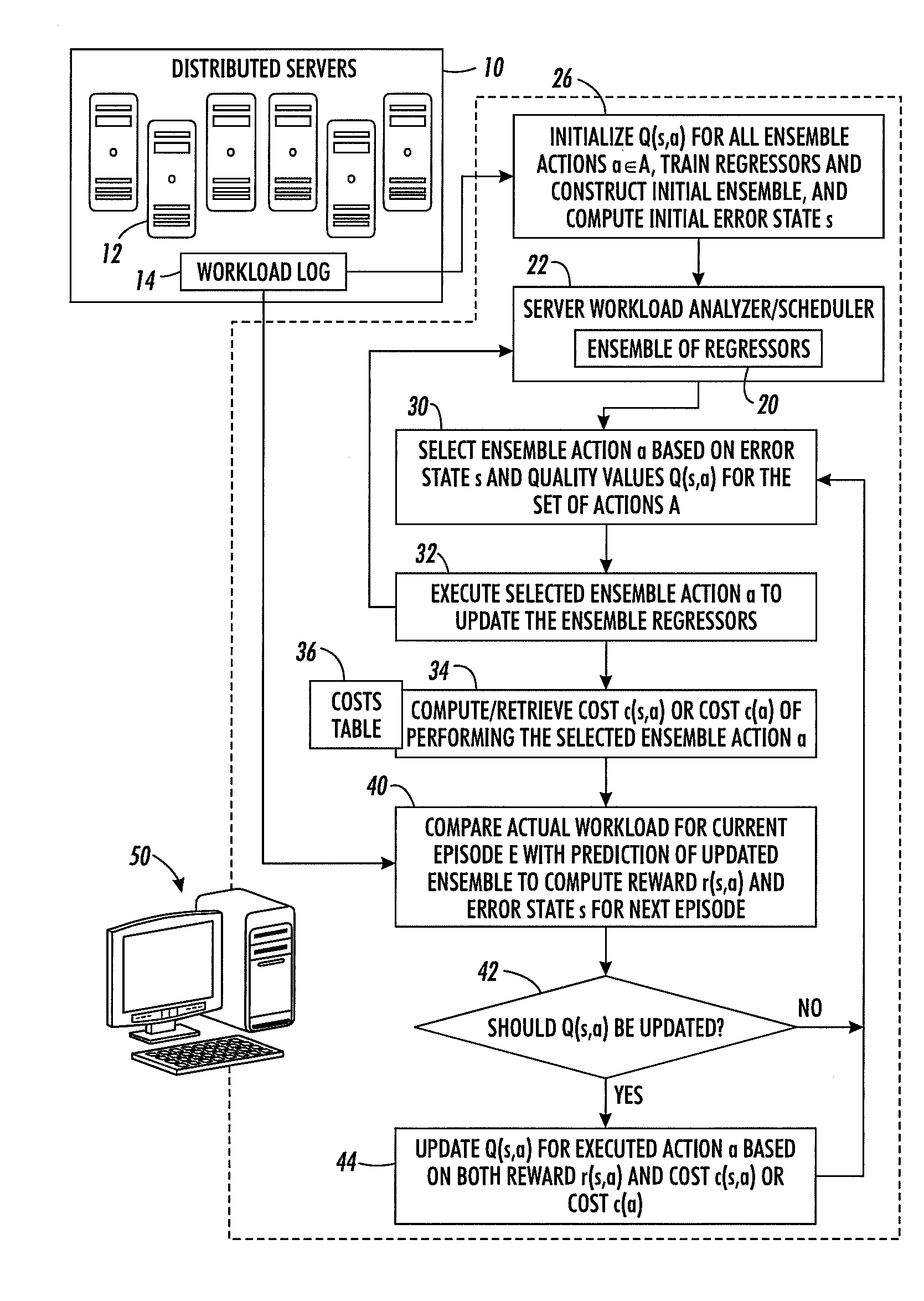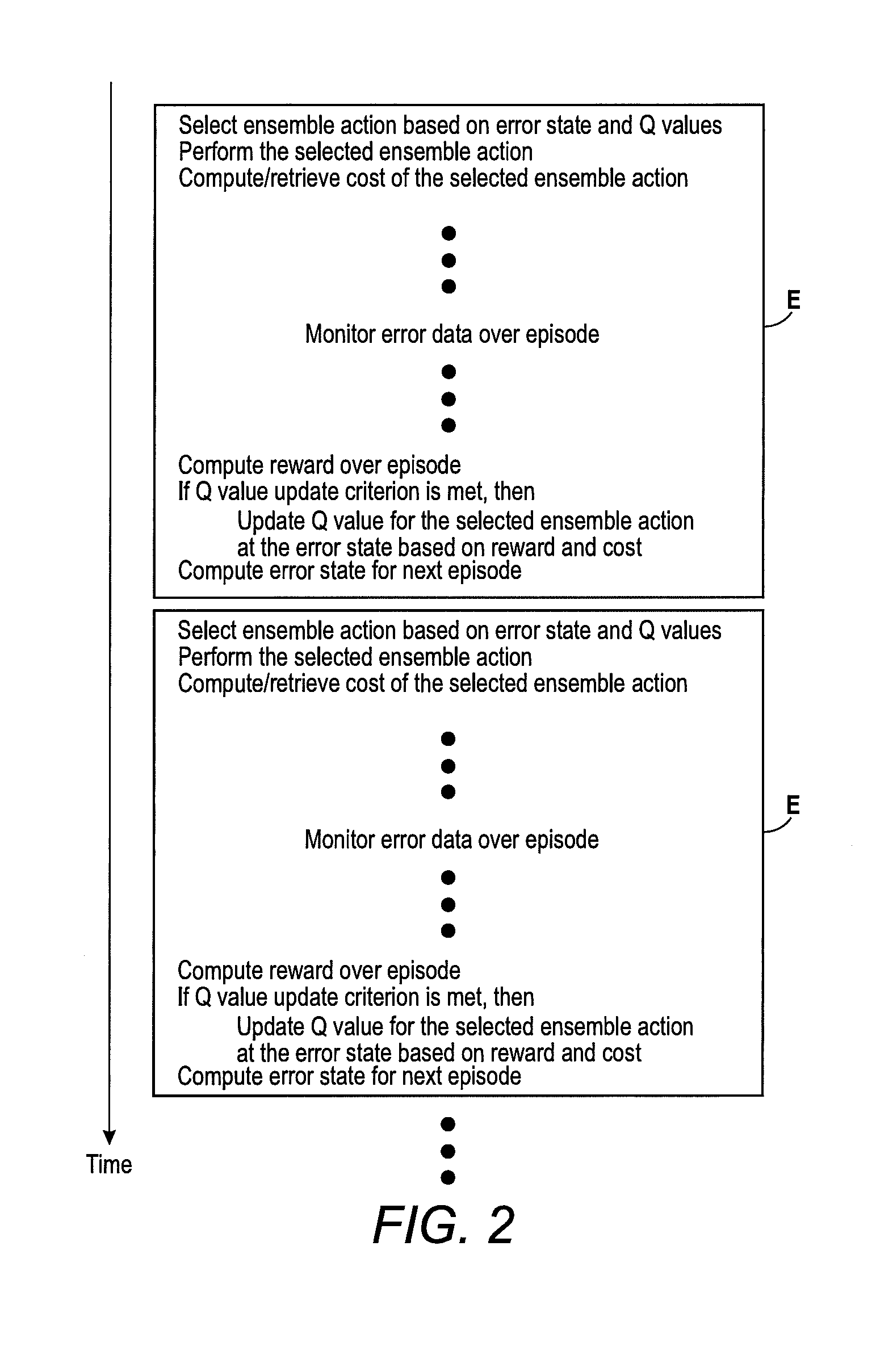Cost-aware non-stationary online learning
a non-stationary, cost-aware technology, applied in machine learning, instruments, computing, etc., can solve the problems of computationally inefficient approaches for larger scale problems, the time frame for data collection is problem-specific, and the number of computationally costly ensemble actions taken after each episod
- Summary
- Abstract
- Description
- Claims
- Application Information
AI Technical Summary
Benefits of technology
Problems solved by technology
Method used
Image
Examples
Embodiment Construction
[0011]The online learning approaches disclosed herein are premised on the recognition herein that the various ensemble actions typically applied to track nonstationarity of the predicted parameter are not all of equivalent effectiveness for a given situation, and moreover the different ensemble actions can have widely differing computational costs. For example, adding and training a new a regressor is usually more computationally expensive than reassigning the weights of the existing regressors. In view of these observations, it is disclosed herein to employ a ensemble learning approach in conjunction with reinforcement learning, e.g. a Q-learning method, used to select the “best” ensemble action to perform at a given point in time (i.e. episode interval). In the Q-learning approach, the ensemble action is selected based on ensemble action quality (Q) metrics computed for the ensemble actions. In this context, it is further disclosed herein to construct the ensemble action quality (...
PUM
 Login to View More
Login to View More Abstract
Description
Claims
Application Information
 Login to View More
Login to View More - R&D
- Intellectual Property
- Life Sciences
- Materials
- Tech Scout
- Unparalleled Data Quality
- Higher Quality Content
- 60% Fewer Hallucinations
Browse by: Latest US Patents, China's latest patents, Technical Efficacy Thesaurus, Application Domain, Technology Topic, Popular Technical Reports.
© 2025 PatSnap. All rights reserved.Legal|Privacy policy|Modern Slavery Act Transparency Statement|Sitemap|About US| Contact US: help@patsnap.com



